SOUTH WOODFORD, WOODFORD GREEN and WOODFORD WELLS



SOUTH WOODFORD
2 Very helpful blogs about the area
You are now 9’5 miles or 15’3 km from CHARING CROSS
Historically part of the ancient parish of Woodford St Mary, in the Becontree hundred of Essex, the area was largely rural before developing rapidly in the 19th century.
In 1835 the area became part of the WEST HAM UNION, for the administration of the POOR LAW.
It became part of the Metropolitan Police District in 1840 and has been part of the London postal district since its inception in 1856, the same year that South Woodford station, now on the Central line of the London Underground, opened.
The parish adopted the 1858 LOCAL GOV.ACT, and a LOCAL BOARD of 9 members was ser up.
South Woodford formed part of Woodford Urban District from 1894 to 1934, being governed by a COUNCIL. Then, in 1934, became part of the Wanstead and Woodford URBAN DISTRICT and, later on, in 1937]an incorporated MUNICIPAL BOROUGH until 1965, when Greater London was formed and the new LB REDBRIDGE was created, out of the groping together of WANS. & WOODFORD with ILFORD.
Until 1965, this area was part of the COUNTY OF ESSEX.
Wben WINSTON CHURCHILL represented the area between 1924 and 1945 it was part of the EPPING PARLIAMENTARY CONSTITUENCY. After 1945 the constituency was WOODFORD. CHURCHILL was the local MP until 1964.
WUDEFORD, WODEFORDE, as it appears in DB. A ford by the wood, that is a crossing of the RIVER RODING, replaced by a bridge by 1238.
The Saxon road followed the valley, branching .east and West. An important trading route.
The land was given to WALTHAM ABBEY but KING HAROLD.
During the MIDDLE AGES, it consisted in 3 small clusters of dwellings:
WOODFORD BRIDGE, the area around the ford (name given from 1805]
WOODFORD GREEN, which was WOODFORD ROW before 1883.
CHURCH END, the area around the church and the hall.
Agrarian villages surrounded by WALTHAM FOREST.
Those 3 areas did not really join up completely until around 1900, thanks to the building of housing estates.
A collection of hamlets rather than a single village. Still now it has retained that portmanteau nature, covering different neighbourhoods: SW, WG, WWELLS, WBRIDGE
11 LONDON LORD MAYORS had homes in the area. A disproportionate number of large houses, then, as it became a place of choice for moneyed people who had business in London to establish their residence. The original rural villagers became outnumbered!.
And royalty used the forest a hunting grounds…
The records show many references to “servants” and “negroes”.
Rural persistence
WOODFORD was one of the last places in Greater London where medieval COMMONERS RIGHTS persisted: local farmers were allowed to graze their cattle on the common land. The BYLAWS passed by the CONSERVATORS OF EPPING FOREST protected those rights. Even late in the 20th c., cattle could roam freely on the “FOREST” (and in this instance FOREST means the DISTRICT, rather than the area covered by trees).
The practice became increasingly less well suited to the times, as cattle penetrated occasionally in gardens and roads, and they had to be driven back onto the forest land
In 1996 the BSE outbreak halted the practice for a while. Their departure meant that grass and saplings grew on the previously well copped meadow areas. In 2001 cattle were reintroduced. It their range was restricted, so that it would be less conflict with other interests.
Railways: from rural to suburbial
EAGLE HOUSE

TRINITY CHURCH
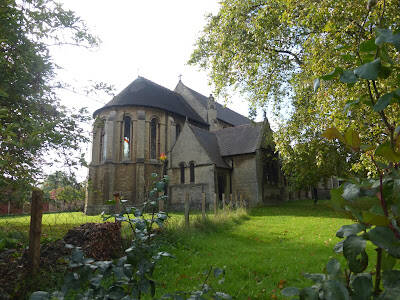
The beginning of the actual modern suburb of WOODFORD can be traced back to the opening in 1856 of the EAST.COUNT. RWY., from STRATFORD to LOUGHTON. A station was created at SNAKES LANE (WOODFORD) and at GEORGE LANE (SOUTH WOODFORD).
The new and convenient means of transport encouraged the growth of daily commuters, well to do City workers: the number of mansions, good villas are attested by contemporar descriptions (1870s)
As the population had reached 7.100 , 3 new churches wer erected in 1874.
The suburb was completed in te period in between the wars, when all available land was hungrily built on.Mansions were pulled down making way for middle class housing estates (3/4 bedrooms semidetached, with front and back garden). In the 1930s were built on average 1.600 houses a year.
In the middle of the 20th c. the CENTRAL LINE was e tended, using existing overlaid network, solidifying WOODFORD’s place in the commuter belt.
An aspirational area, with a majority of white population with other ethnic groups,
LU STATION

1856. Originally GEORGE LANE. A network of streets was laid out both sides of the railway line



The volunteer fire brigade engine used to be garaged at the rear of the RAILWAY BELL
South Woodford's retail and business area is centred on George Lane, the location of South Woodford tube station and Woodford Green High Road. There are several leading chain stores, such as Sainsbury's, Marks & Spencer, Waitroseand Boots and a number of smaller shops, bars, restaurants and cafes. British bakery Gails recently opened on George Lane.
ELECTRIC PARADE
1925. Shops and flats
Flowers and a large light bulb
Nicola Burrell and pupils of Oakdale Infants, Wells Primary and Churchfields Infants and Junior Schools
ODEON CINEMA

Art Deco, by arch. PRITLOVE, seating 1724, incorp. a COMPTON THEATRE c. Restaurant and ballroom
Opened in 1934, as a MAJESTIC (a small chain of 5), with “CLEOPATRA” (CLAUDETTE COLBERT) with the presence of W. CH.
In 1935 ABC CINEMAS took over. In ‘73 tripled re-opening. In ‘86, CANNON, 7 screens.
THE GEORGE PH

an 18th-century building on the site of an earlier inn, was originally a stopping point for stagecoaches, with several bars.
NORTH CIRCULAR ROAD

The High Road crosses the very busy North Circular Road (A406). It is 25 miles long and together with the South Circular Road forms a ring road for London. It doesn't quite make a complete circuit though, as you have to cross the Thames in the East on the Woolwich Ferry. The motorway M25 however does make a complete circuit of London.
Sculptures and benches created by TIM WARD




High Road: GRAND MANSIONS
ELMSHURST

One of the large mansions of the district, b. In 1171, by SYLVANUS GROVE (thence GROVE HOUSE), a prosperous London merchant who had financial dealings with MARYLAND.
QUEEN MARY’S GATE
The tower blocks erected in the grounds of ELMHURST as halls of residence of QUEEN MARY’S COLLEGE were demolished and the area was redeveloped for private housing
No 140 HOMLEIGH
WEST LODGE
THE OLD RECTORY
Built at the beginning of the 1800s, showing the high status of the minister.
Later became Council offices, London Quarter Sessions, offices
ST.MARY’S CHURCH

St Mary's church was first recorded on this site in 1177. The oldest part of the current church is the west tower built in 1708.
An Act of Parliament passed in 1816 mandated to enlarge, improve and repair the church, allocating a budget of £3.000: A new church was added to the original building in 1817. The Bishop of London dedicated the new building, and 1209 people were fed afterwards.
Extended again in 1891 to cope with the expanding population but was destroyed by arson in 1969. Fortunately the silver, some vestments and registers dating back to 1558 were saved.
The new building was completed in 1972. Designed by JOHN PHILLIPS. Square shaped, with the altar close to the centre. Re-dedicated by the BISHOP Of BARKING. It incorporates the CHAPEL OF ST.PHILIP AND ST.JAMES, following the amalgamation of those parishes.
The MEMORIAL TO BLESSED JOHN LARKE. Rector, who was martyred for defying HENRY VIII supremacy in matters of religion.
WW1 MEMORIAL
WAR MEMORIAL (all wars)
WILLIAM MORRIS SR. MEMORIAL
GRAVE OF WILLIAM MORRIS SENIOR
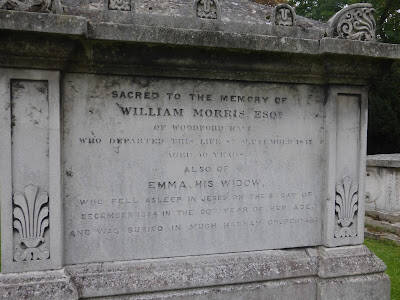
In front of the church is the grave of William Morris Senior, the father of William Morris(1834-96), artist, textile designer, poet and member of the Pre Raphaelite brotherhood.
Family crest and motto( PAX ET LIBERTAS).
Morris style decoration?
PARISH MEMORIAL HALL. SITE OF WOODFORD HALL
Woodford Hall had been the manor house for centuries (it was already recorded before the NORMAN CONQUEST) but the last of the successive buildings which stood here was demolished in 1895. Along CHELMSFORD and BUCKINGHAM ROAD a wall (listed) still stands. And a wall pillar, in the churchyard, almost in front of the church, which has attached to it a notice about a remarkable COPPER BEEECH TREE.
On 1869 WOODFORD HALL became MRS.GLADSTONE ‘S HOME FOR THE POOR, at which time a chapel was added at the rear, which survived converted into a house CHAPEL LA FRITH, with an entry in BUCKINGHAM ROAD. It is possible to see it over the wall behind the MEMORIAL HALL.
Today the parish Memorial Hall, built in 1902 stands in its place. Funded thanks to a donation of Sir JOHN ROBERTS, in memory of his brother THOMAS.
ORIGINALLY B. as a gymnasium?
Public meetings, lectures, drama performances by local societies. After the 1969 Church fire, services were held here. Even it was used as a temporary court.
Morris family

The Morris family lived in Woodford Hall, next to St Mary's from 1840-1847.
SIR THOMAS ROWE
He explored the AMAZONIA RIVER (300 miked upriver). Appointed ambassador by KING JAMES I, went on to take part in important missions to INDIA , where he negotiated a deal which paved the way for the E.I.C, and to ALGIERS, where he negotiated the release of 700 English captives.

To the West, DERBY ROAD
Development started in the 1860s. All streets named after members of the DERBY cabinet
No.51 WEATHERVANE
Inside EPPING FOREST
GIPSY RODNEY SMITH MONUMENT
He was born here, 1860, in a caravan. A Romany converted to Christianity, became one of the first officers of the SALVATION ARMY, under WILLIAM BOOTH’s leadership.
Afterwards, became an itinerant preacher and was awarded an MBE.
42 OAK HILL GARDENS
JAMES HILTON
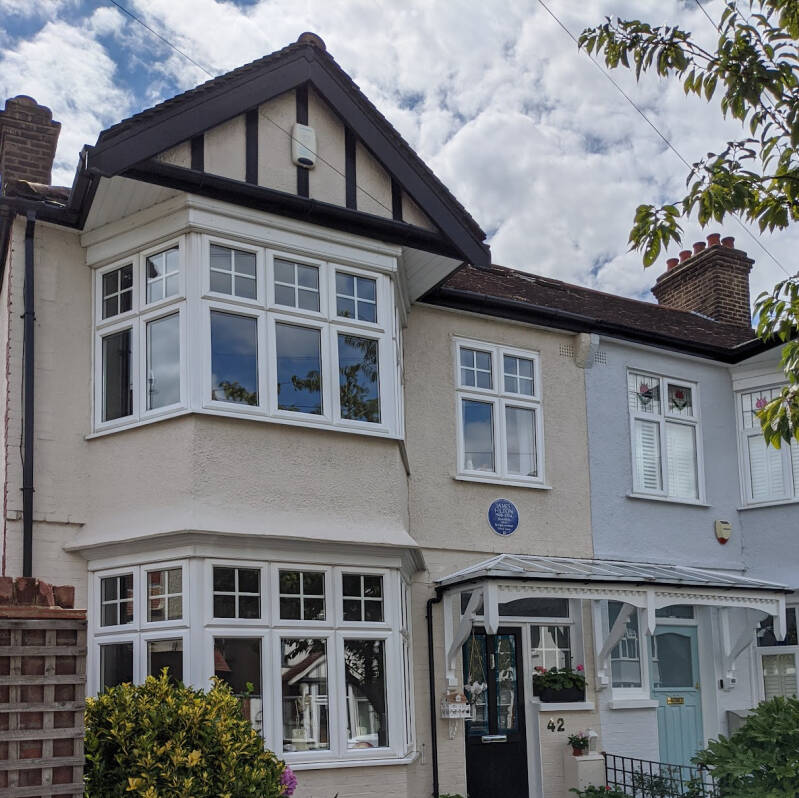

Junction HIGH ROAD and WOODFORD NEW RIAD
NEW ROAD
Laid out 1826
WATER PUMP
High Road in the shrubbery nearly opposite the Churchill Statue.
This is one of four such hand pumps still surviving in the Woodford area. All of these have been renovated. Before water pipes were laid local residents had to rely on these for their water supply. Though unconnected with them, these pumps remind us that Woodford Wells got its name by the 18th century from springs which were thought to have medicinal properties. The other pumps are at:
Beside Chigwell Road, about 3 yards NE of where the M 11 crosses over it. Errected 1834. (See No. 25a. on MAP )
Under a willow tree beside the pond at the end of Johnston Road. (See No. 25b. on MAP )
Chigwell Road between Broadmead Road and Wansford Road. (See No. 25. on MAP
WOODFORD GREEN


Another hamlet in the ancient parish of Woodford. The locality takes its name from the Green, an area of open common land - a part of Epping Forest - besides which the area first developed.
It ranks as one of the highest income areas of Greater London.
THE CRICKETERS
Woodford Green Cricket Club was founded in 1735. It plays alongside the High Road. The club has teams for all age groups with the senior teams playing in the Hamro Essex League.

Cottages, stables, entrance lodge

Nursery and Pre-school
CHURCHILL STATUE

Sir Winston Churchill (1874-1965) was MP for Wanstead and Woodford constituency for 40 years and was prime minister from 1940-5 and from 1951-52. Churchill was a colourful character who was responsible for the fiasco of Gallipoli in WW1 yet proved to be an inspirational leader in WW2, who undoubtedly saved the country when many thought it was lost. Some people think that this statue is a far better likeness than that in Parliament Square.
DAVID McFALL, sculptor. The statue was unveiled, 1969, by Field Marshal Montgomery.
There is another statue of him in Wanstead.
The constituency is represented since its creation in 1997 by Iain Duncan Smith, leader of the Conservative Party from 2001 to 2003. He was Secretary of State for Work and Pensions from 2010 to 2016.
Broomhill Walk and Road
HURST HOUSE: THE NAKED BEUTY
No. 1 Broomhill Walk. This house (the central block, as wings were added later in the century) was built about 1714 as Hurst House but was named on some maps as the Naked Beauty probably because it stood out at the top of the Salway Hill unshielded by trees. A disastrous fire in the 1930s destroyed much of the original building; but it was then reconstructed to the original design and now looks impressive. Minor wings added. The original owner was Henry Raine a philanthropic brewer from Wapping who founded the first Raine's School just 5 years after building this house.
DRINKING FOUNTAIN

By the MET.DRI.FOU.and CTL TROUGH ASS.
Under a wooden canopy, it has some of the original metal fittings, quite unusual
OBELISK
The spherical stone balls round the base arrived on Woodford Green in 1860. In 1970 they were sold to an antique dealer; but as each one weighed 280 pounds (125 Kg approx.), it is not surprising that he could not sell them, and six years later they were bought by the Woodford Green Amenities Group and set up round this obelisk, which had been erected here in 1934.
NEW JUBILEE COURT
Jubilee Court was built on the site occupied by the JUBILEE HOSPITAL. This sculptured plaque was taken from the demolished hospital and used as a decoration for this developer's project. The hospital opened in 1899 commemorating Victoria's diamond jubilee in 1897. The webmaster of EXPLORING EAST LONDON attested that this was a lovely little cottage hospital with just 54 beds, as he once was a patient there. However in 1985, it was shut down by Kenneth Clarke in a move to centralise to a few large hospitals. Recently, the health service has started encouraging GPs to get together and open their own treatment centres. Plus ça change c'est la même chose.
HOUSES in BROOMHILL ROAD
1880s-90s. Locally listed
Georgian porch and gable
FORMER HIGHAMS MANOR HOUSE, now COUNTY HIGH SCHOOL FOR GIRLS
The main building, finished in 1768, was originally the home for the owners of the Highams Estate. In 1768 this was Anthony Bacon MP, the man who built it. However, the Highams Manor (known as Highams Bensted) dates from at least the 14th Century, and the original house was situated close to what is now Blackhorse Road Underground Station. Much of Highams Park, including the lake, was originally encompassed within the grounds of the house.
Successive occupiers were a former governor of BOMBAY and then JOHN HARMAN (he commissioned HUNPHREY REPTON to landscape the gardens, today HIGHAMS PARK).
His son, JEREMIAH, sold the property to EDWARD WARNER in 1849, member of a prominent local family. He even had PM GLADSTONE as a guest.
With the opening of HALE END (now HIGHAMS PARK) STATION, 1873, the WARNERS began the redevelopment of the area, and other more substantial properties in WALTHAMSTOW.
30 acres of grounds were purchased by the CORPORATION OF LONDON, in 1891, to preserve them as part of EPPING FOREST.
During World War 1 it had been used as a military hospital and the building, in its time, has hosted some distinguished political guests including Winston Churchill.
The SITE OF AN AIRFIELD… in THE GREEN?
In WW1, when London was troubled by ZEPPELIN AIR RAIDS, a response for this was to place to ROYAL FLYING CORPS night-fighter squadrons. THEY were headquartered at WOODHAM MORTIMER and here, with up to 8 aircrafts (generally BLERIOT EXPERIMENTAL) at each airfield. They formed part of the LONDON AIR DEFENSE AREA.
The CUFFLEY airship (11 Sept.1916] and the L48 (June 1917, over NORFOLK) were shot down by those squadrons.
High Foad (W)
THE CASTLE PH

Until 1914 Londoners used to visit Woodford in large numbers on day trips stopping off here when visiting the Epping Forest. There has long been a pub on this spot. In 1753 it was known as the Ship and Castle. The High Road was one of two main routes from Leytonstone which existed from Roman times. The other was the Low Road (Now Chingford Road) which follows the Roding valley and used to cross it at Woodford Bridge, which was roughly where the M 11 now bridges the road.
FORMER BANK

The Terrace, Broadmead (East)
SIR JAMES HAWKEY HALL. COAT OF ARMS

On the front of the Sir James Hawkey Hall, Broomhill Road. Note the trees and the river at the top indicate Wood ford, while the heron supporters represent Wanstead. On the shield are leopard's heads and birds (martlets). These are the symbols of King Harold, who gave the manor of Woodford to Waltham Abbey, and of Edward the confessor who gave Wanstead to Westminster Abbey. Wanstead and Woodford merged with Ilford in 1965 to become the Borough of Redbridge. Hawkey served as Mayor of Wanstead & Woodford in the 1940s.
Snakes Lane
FORMER POST OFFICE
PARISH PUMP
POND
A little North of Snakes Lane West
THE LODGE
This was originally the GATEHOUSE at the entrance to HARTS, a large mansion and like the main building is Grade II listed.
There had been a house here in mediaeval times, but in 1617 Sir Humphrey HANDFORTH who was Master of the WARDROBE to KING JAMES I built an impressive house.
In the 18th century it was owned by Richard WARNER who laid out a noted botanical garden. More recently it became Harts HOSPITAL (in 1919 EAST HAM BOROUGH COUNCIL bought the house and established the HARTS SANATORIUM, an hospital for patients with lung diseases; wards for women, huts and shelters were built to house male patients; in 1933 a new pavilion was built, incorporating an X RAY room. As there were no drugs for TB, plenty of sunlight, fresh air, rest annd nourishing food was offered).
The head gardener cottage became the Night Nurses Home.
After WW2 (and after all damages were repaired) became part of the NHS, a new operating theatre was opened, an occupational therapy depart established and art therapy introduced. In 1959 it had 100 beds.
Antibiotics were introduced. It was open to patients with diseases of the chest, not only with TB.
In 1961 a new chapel was open.
By 1983 It was used mainly for geriatric cases. It closed in 1983. It is now a NURSING HOME.
Warner gave his name to a PATH and the POND on the Green.
HARTS
RICHARD WARNER (1713-75] was passionately interested for botany. He studied plants grown locally and he cultivated rare plants. He had built a HOTHOUSE. Amongst his relations was PHILIP MILLER, head gardener at CHELSEA PHY. GDN, where new plants from abroad were cultivated.
The 18th c. was a time of mounting interest in plants brought from the 4 corners in the world. In 1759 PRINCESS AUGUSTA and LORD BUTE established the KEW BOTANICAL GARDENS.
In 1752 CAPT.HUTCHINSON, Commander of the GODOLPHIN, an EAST INDIA MAN, set off for INDIA, SUMATRA and BATAVIA. On their return, they called at CAPE OF GOOD HOPE, where they found a new plant, in 1754. In fact, that plant was destined for HUTCHINSON’s employer, CHARLES RAYMOND, a shipowner of UPTON, who was interested in botanical matters. After being presented with the new plant, a GARDENIA, and as he was moving to VALENTINES, he presented in on to WARNER.
So… the the first GARDENIA that bloomed in England was cultivated here. That is the main claim to fame of WOODFORD WELLS!.
WARNER was in correspondence with CARL LINNAEUS, who refused the name “WARDENIA”. It finally was known as GARDENIA after ALEXANDER GARDEN of SOUTH CAROLINA.
In the pathway on the GREEN
MAIN GATES

In the grounds
FAKE ABBEY FOLLY


OPTION 1: The route turns right EASTWARDS now along SNAKES LANE WEST, towards WOODFORD LU STATION
OPTION 2: Continue along the HIGH ROAD

OPTION 1
THE RAILWAY TAVERN

PUBLIC LIBRARY

Woodford Green Library in Snakes Lane has been serving the community since 1961.
STATION

The station was originally opened on 22 August 1856 as part of the Eastern Counties Railway branch from Leyton to Loughton.[9][10]Further alterations were carried out by the successor company, the Great Eastern Railway, including services to Ilford via the Fairlop Loop opened between Woodford and Newbury Park in 1903.[10] After 1923 the station came under the control of the London & North Eastern Railway until transfer to the London Passenger Transport Board (LPTB) on 14 December 1947 as part of the extension of the Central line services of the London Underground. The station acted as a terminus of the Central line, with passengers transferring to a steam shuttle onwards towards Epping
Once the railway arrived here in 1856, the population soon increased from 4,609 in the 1871 census to 13,798 in 1901.


THE BROADWAY


PANKHURST GREEN
by GERARD GREENE, REDBRIDGE MUSEUM & HERITAGE CENTRE MANAGER

In the 1920s WOODFORD was a rural ESSEX village, home to gentry and well heeled politicians, including future Prime Ministers.
The arrival of SP and SC must have scandalised the district
“WHERE WE LIVE” MOSAIC
Worked with George Lansbury in the East End. 1924 Sylvia moved from the East End of London to Woodford Green, into Red Cottage with Silvio Corio, an Italian anarchist/journalist/painter and her lover and companion for 30 years. Demolished in 1939, Red Cottage was number 126 on Woodford Green High Road. They ran it as a teashop. What remains is the Stone Bomb monument.
SITE OF No. 3 CHARTERIS ROAD, WEST DENE

It was demolished probably sometime 1970 - 1995 and the site is now occupied by the Tamar Square development.
In 1935 Sylvia moved to a Victorian house, West Dene, 3 Charteris Road.
Ethiopia
While living in WOODFORD she became interested in Ethiopia she began publishing the New Times and Ethiopian News in 1936 and carried on for almost 20 years.
“When the emperor, Haile Selassie, arrived in exile in Britain in June 1936 she was part of the unofficial welcoming committee that met him at Waterloo Station, presenting him with the latest edition of the paper.” (From a Radio 4 programme ‘Sylvia Pankhurst: Honorary Ethiopian’.)
She became her friend and advisor.
She supported the union of ETHIOPIA and ITALIAN SOMALILAND
In 1956, at the invitation of Selassie, she emigrated to Ethiopia, with her son , and stayed there for the remainder of her life. She founded and published the ETHIOPIA OBSERVER.
She died in 1960, receiving a state funeral, and was named HONORARY ETHIOPIAN. Buried in the HOLY TRINITY CATHOLIC CH., Adis Adaba as saint/martyr of Ethiopian nation.She is the only non-Ethiopian buried there
Art at the service of activism: VOTES FOR WOMEN
Manchester, London,
She was born in 1882, in OLD TRAFFORD, MANCHESTER, daughter of future founding members (in 1893] of the ILP , RICHARD PANKHURST and EMMELINE GOULDEN.
She attended MANCHESTER HIGH SCHOOL with sisters CHRISTABEL and ADELA. After attending MANCHESTER SCHOOL OF ART and getting a scholarship, she joined the ROYAL COLLEGE OF ART, SOUTH KEN., where she witnessed the lack of gender equality.
In 1906 she started to work for the WSPU, with mother EMME. and sister CHRIST. She designed the LOGO, the LEAFLETS, the BANNERS, POSTERS and decorated the meeting hall.
ALICE HAWKINGS and MARY CAWTHORPE joined them, during a tour of England.
SYLVIA retained meanwhile his affinities with the labour movement and concentrated in local campaigning, founding with AMY BULL the ELF of the WSPU.
She contributed wit art to the WSPU newspaper.
she published “THE SUFFRAGETTE: THE HISTORY OF THE WOMEN'S MILITANT SUFFRAGE MOVEMENT”, a propagandist history.
In 1913 she spoke in the RFH in support of the Dublin workers, who were staging a strange (humane society)
Because that involvement with the workers movement, her family relations were strained, as mother EMMELINE thought that their movement had to be independent. She was expelled from the WSPU.
SP wanted a socialist organisation and the staging of direct action, plus tackling wider issues. She had a close relationship with KEIR HARDIE.
Between 1913-14 she was arrested 8 times and forcefed. She won a HUNGER STRIKE MEDAL from WSPU.
USA McCLURE’S MAGAZINE gives accounts of that period.
London’s East End
In 1914 she f. the ELFS, later the WORK. SUFFR. FED., later the WORK. SOC. FED.
She founded the newspaper WOMEN’S DREADNOUGHT, employing MARY PHILLIPS as a writer. It became WORKERS’ DREADNOUGHT.
As most of the members were conscientious objectors they camps against WW1. In 1915 SP gave support to the I WORLD’S PEACE CONGRESS..
Instead, the WSPU was for conscription and supported the war, especially by means of their new paper BRITANNIA. And CHRIST. travelled to Russia to advise against withdrawal from war
The EAST END SUFFRAGETTES defended the interests of women of the poorer parts of London They set up a cost price restaurant to feed the hungry, but without the taint of charity. They established a toy factory to give work to unemployed women They defended the rights to soldiers wives to decent allowances, through advice centres and campaigns to oblige the government to take action.
The WOMEN SUFFRAGE FEDERATION continued to move towards the left, hosting the inaugural meeting of the COMMUNIST PARTY (British Section of the Third International). SP wrote “A CONSTITUTION FOR BRITISH SOVIETS” in the WOM.DREAD.
The BRIT.SOCIALIST PARTY became the CPGB. For a short period the CP(BSTI) was unified with it.
SP was expelled and founded the C.WORKERS PARTY. They were in favour of workers councils, that is SOVIETS. She attended international meetings. Anton Pannekoek.
Towards de end of the GREAT WAR she began living with SILVIO CORIO, but rejected marriage and the taking of her husband’s name.
And they moved to WOODFORD GREEN.
Silvio Corio
SC, 1875, Turin. Printer. SOCIALISM. Fled to France. Then London 1901. Published INTERNAZIONALE and SCIOERO GENÉRALE. With MALATESTA and RROCKER f. POPULAR UNIVERSITY (EUSTON)
ANARCHISM. WEST END (German, French) and EAST END (Jewish)CLUBS. Agitation (VOICE OF KABOUR) and Propaganda. London correspondent for VOLONTA paper. WWQ: First sided with Italy, after ANTI-WAR.
Worked with FREEDOM as printer.
Editorial Board of WOM DREADN. Long relationship with SP. Always threatened by ALIENS ACT.
GERMINAL mag with SP. Workers’Café at RED COTTAGE. Printing anti-fasc. material and support over SP stance on ETHIOPIA. D. 1954
Son RICHARD was born in 1927. She refused to reveal the name of the father (“an old dear friend”). Mother EMMELINE broke ties and she did not speak again to her.
In the 1930s she drifted away from Communism, but remained involved with ANTI-FASCIST and ANTI-COLONIALIST movements.
She was instrumental in establishing the SOCIALIST WORKERS’ NATIONAL HEALTH COUNCIL.
in 1936 she published THE NEW TIMES AND ETHIOPIA NEWS and became supporter of HS. She raised funds for Ethiopia’s first teaching hospital, and did research in art and culture of that country, which resulted in a book.
In 2004, the release of previously classified government files revealed that throughout the 1930s and 1940s MI5 had monitored Ms Pankhurst’s movements and intercepted her letters and telephone calls. She wrote a letter to VISCOUNT SWINTON, chair of the Committee investigating FIFTH COLUMNISTS and enclosed lists of active Fascists still at large and of anti-Fascists who had been interned.

A possible diversion:
Alongside SNAKES LANE EAST, towards the RIVER RODING VALLEY and then South towards VALENTINES or WANSTEAD PARK

ST.BARNABAS CHURCH

The church had its origins in a 1904 iron mission church. This permanent church was built 1910-11. The church was designed by E. T. Dunn, who also designed St Luke's Church, Ilford.
WAR MEMORIAL
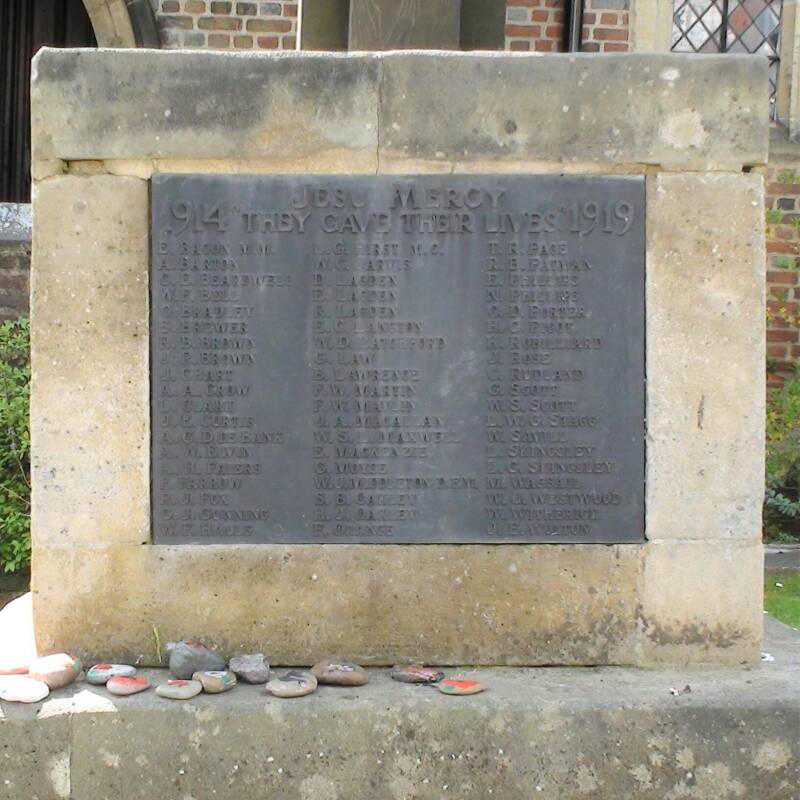
SITE OF THE FORD

The name is Old English and means 'ford in or by a wood'. The ford refers to a crossing of the River Roding. Walking to the end of Snakes Lane East you will find the crossing to which the name refers.
RIVER RODING VALLEY PARK
PARISH PUMP

This Victorian water pump was saved when the 1771 bridge was replaced in 1962 and has been returned to the site of the ancient river crossing.
CHARLIE BROWN’S ROUNDABOUT

There is nothing to see at Charlie Brown's roundabout but the traffic, yet the name still remains. But who was he? Like so many other places in East London it is connected with a pub. From 1899-1932, Charlie Brown was the landlord of the Railway Tavern near the West India Docks, Limehouse. He put together a large collection of curios and exotica which formed a mini museum. Ship owners did not pay their crews until some days after arrival, so they often landed without cash. Charlie one of the few who would supply them with drink and food (mostly the former) on credit. He was also generous in support of the dockers. For all this he was warmly remembered and his funeral, at what is now Tower Hamlets cemetery, was attended by hundreds of mourners and thousands lined the route. There were 140 floral tributes and the cortege took 20 minutes to pass. In 1938 his son, Charlie junior, opened his own pub here called the Roundabout, but it was known locally as Charlie Brown's. It disappeared in 1972 with the changes to road lay out for the M 11.

Back to WOODFORD GREEN and the HIGH ROAD
CLEMENT ATLEE lived here

Attlee lived here while he was MP for Walthamstow West.
B.in PUTNEY, OXFORD B.A., called to the Bar 1906.
Voluntary work at HAYLEYBURY HOUSE, STEPNEY, a UNIVERSITY SETTLEMENT, a charitable club for working class boys, run by his old OXFORD SCHOOL. He got in contact with poverty an deprivation, making him aware that some sort of state income redistribution was necessary, charity alone being insufficient.
In 1908 he joined the INDEPENDENT LABOUR PARTY, becoming active in local politics. He was a candidate in STEPNEY, 1909.
Secretary for BEATRICE WEBB and for TOYNBEE HALL (UNIVERSITY SETTLEMENT), WHITECHAPEL. Explainer of the NATIONAL INSURANCE ACT. Lectures LSE.
In 1914 he joined the army (while his brother was conscious objector, suffering prison.They had a rift). He was at the GALLIPOLI CAMPAIGN.
Back to England due to dysentery, but returns to action. 1916. Evacuee at SUVIA BAY. He felt admiration for the FL ADMRALTY, CHURCHILL, for his bold design of GALLIPOLI.
Badly wounded in IRAQ, back to England. As a MAJOR, he trains soldiers in England..
1918. To the WESTERN FRONT.
1919. When discharged enters the LSE. 1921-22. Meets, gets engaged and marries VIOLET MILLAR.
MAYOR OF STEPNEY. Tackles slum landlords, appoints health visitors and sanitary inspectors, reducing Infant mortality. Finds jobs for unemployed ex servicemen.
1920. “THE SOCIAL WORKER”: he sets up his principles, which inform his political philosophy, and underpin his activity in government. The principle: the organised community, by law, has to help. As opposite to charity d to entitlement according to character.
1921.GEORGE LANSBURY’S POPLAR REBELLION. He, a personal friend, fully supported. Instead MORRISON (HACKNEY) opposed.
1922. MP for LIMEHOUSE. He helps RAMSAY McDONALD being elected leader of the LP, becoming his PPS. 1924.Under-secretary of War in the firs LABOUR Government.
1926. He opposes GENERAL STRIKE, without undermining it. He negotiates with the ELECTRICAL UNION to continue supplying hospitals.
1927. Member of ROYAL COMMISSION, recomm INDIAN self-rule. 1933. Supp for INDEPENDENCE.
Chancellor of the Duchy of Lancaster (MOSLEY’s successor, as the latte had left LABOUR).
Great Depression. NATIONAL GOV. But he stays loyal to LABOUR, turning down a post.
1931. Retains LIMEHOUSE, but a disastrous election for LP (52 seats). Deputy Leader to LANSBURY. Opposes NAT.GOV.
Wife I’ll.Financial problems. STAFFORD CRIPPS donation.
1932-33. Flirts with radicalism. Member of the SOCIALIST LEAGUE. Stands for a socialist government with emergency
owers to overcome the opposition by vested interests. Shows admiration for CROMWELL’s strong army rule. However, looking more closely at DICTATORS and at MOSLEY he distanced himself from TOTALITARIANISM.
1935. LANSBURY resigns (over sanctions to MUSSOLINI’s invasion of ABISSINIS). Interim leader.
1935. LP election comeback, 38% of the vote. Elected leader. Competence and unifying force. Support of LEAGUE OF NATIONS.
1936. No great involvement in ED.VIII’s abdication.
Against CHAMBERLAIN’s rearmament budget, and alliance with France.
However, the LPs PACIFIST POLICY is jettisoned due to ineffective LEA/NAT and the rising threat of NAZI GERMANY. He opposes the 1938 MUNICH AGREEMENT.
He visited Spain in 1937. MAJOR ATTLEE COMPANY.
Book: “THE LABOUR PARTY IN PERSPECTIVE”: no need to compromise socialist principles for more (liberal)votes, watering down policies. Clear and bold policies.
Late 30s. Living in STANMORE. The family accommodated a kid from GERMANY.
Deputy PM
Two Views of Churchill’s Relationship with Clement Attlee
THE DEMISE OF A COUNTRY ESTATE…THE BIRTH OF MONKHAMS

Here, between WOODFORD and CHIGWELL, in ESSEX, there was, originally, a country estate. The area contained a country house, originally a farm.
In the late 18th and early 19th centuries, and in the north of the parish Monkhams Lane led from Woodford Wells to the farm. The winding section by Lord’s Bushes became first ’Hospital Lane’ and then later ’Knighton Lane’, from which Monkhams Lane ran through the Forest to Monkhams Farm and on to Woodford Bridge.
To cope with a shortage of farm workers, the Ilford National Part-Time Workers committee was set up in late 1916 or early 1917. German prisoners of war were put to work on local farms including Monkhams, Woodford Green.
The owner: ARNOLD HILLS (1857-1927), the founder of WEST HAM UNITED. He was a keen sportsman (he played football and cricket, and he was the English champion of the mile and the 3 kilometres course). He had been in HARROW, where he played for the HARROVIANS; in 1879, at the OVAL, they won the CORINTHIAN CUP, England 5-0 to SCOTLAND)and in OXFORD.
He was the managing director of the THAMES IRON WORKS (f.1846). He lived, in fact, in a small house, in EAST INDIA DOCK ROAD, CANNING TOWN. He organised recreational centre for his employees.
However, those were times of poor pay and bad working conditions, and when strikes took place black labour was employed.
In 1895, with DANE TAYLOR, he f. the THAMES IRONWORKS F.C. (a totally vegetarian football team, which later turned professional and changed their name to West Ham United) and he supported financially the team for the next 5 years. He rented the MEMORIAL GROUNDS to the club at very favourable terms.
However, the failing fortunes of the iRONWORKS, and his own health problems (he suffered from arthritis, becoming virtually invalid). He was involved in the developing of a new car engine, though.
HILLS had to sell the land for development, in order to pay for his debts…
As a matter of fact, the families of the gentry moved out, their homes were pulled down and the grounds laid out for housing estates. On the Monkhams estate, while the southern part had been developed by 1914, the remaining part was completed in garden-suburb style during the 1930s.
ARNOLD HILL was the first president of the LONDON VEGETARIAN SOCIETY,bformed as a breakaway from themain society (1888). He served on the executive committee alongside a young MAHATMA GANDHI, who wrote several journal articles. Indeed, it has been argued that the society was responsible for Gandhi coming to see a vegetarian diet as one not just central to his Hindu religion, but also a moral imperative and component part of his philosophy of non-violent struggle.
He presided as well the VEG CYCL AND ATHLETIC CLUB and the LDN VEG RAMBLING CLUB, founded THE VEGETARIAN MAGAZINE and had close links with the TEMPERANCE LEAGUE, and founded theORIOLET FRUITARIAN HOSPITAL in LOUGHTON.
He wrote a book, VITAL FOOD, where he argued for a plant based raw foo field
Finding utopia in London's suburbs?
There can be fewer residences for the city man which combine with so remarkable degree the advantages of Town and Country”.
That was the sales patter for a new estate being built in the 1930s.
The suburbs!.Finding London Utopia…
The suburbs were hailed as a new and wonderful way of living, combining the best of city and of rural life.
Is this still the case today?. How ave the suburbs fared?.
At the beginning of the 20th c. the suburbs was seen a place where you could better yourself, build your own home and escape the INNER CITY.
The upper classes, though, sneered that view, as the saw them a downmarket: either you live in the city or in the country

Remember, you were about to cross SNAKES LANE EAST
Inmans Row
18th c.House
ALL SAINTS, WOODFORD WELLS CHURCH, ATRIUM


Back by the HIGH ROAD-WOODFORD GREEN
Opposite TRINITY HIGH SCHOOL and ST.TOMAS OF CANTERBURY RC CHURCH
WODFORD WELLS
Woodford Wells is a small settlement on the edge of Epping Forest, in Woodford, East London. The area lies about 9.5 miles (15.3 km) north-east of Charing Cross.
The name is shown in the Chapman and Andre 1777 map of Essex, and shortly after on an Ordnance Surveymap of 1805;[1] the name refers to mineral water wells. In the 18th century briefly the hamlet was a small spa but by the 1870s the wells had been long neglected and Woodford Wells had become part of a "straggle of hamlets".
Mill Lane (West)
THE ROSE AND CROWN PH

FORMER WESLEYAN CHAPEL, THEN WORKING MEN CLUB, now flats


Built as a chapel for independent Wesleyans in 1869. A replacement church was built elsewhere in 1904 and this building was bought by Sir J. R. Roberts, who presented it for public use. By 1965 it was in use by the Club.
Bucks Free Press describes the residential accommodation that it became in 2005.
“Woodford Green Men's Club
This memorial was erected to honour the memory of those members who made the supreme sacrifice for their country in the Great War 1914 – 1918”
High Elms
VICTORIAN BUTCHERS SHOP
Listed
TRINITY HIGH SCHOOL
ST.THOMAS OF CANTERBURY RC CHURCH
East
house
THE TRAVELLER’S FRIEND PH
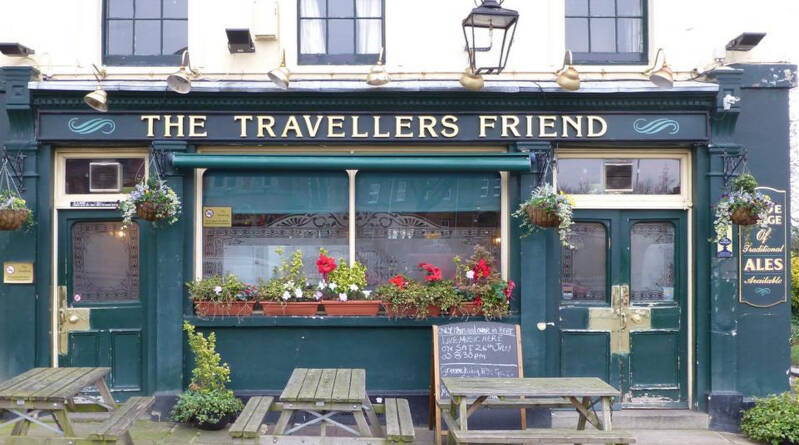
House
THE HORSE AND WELL PH
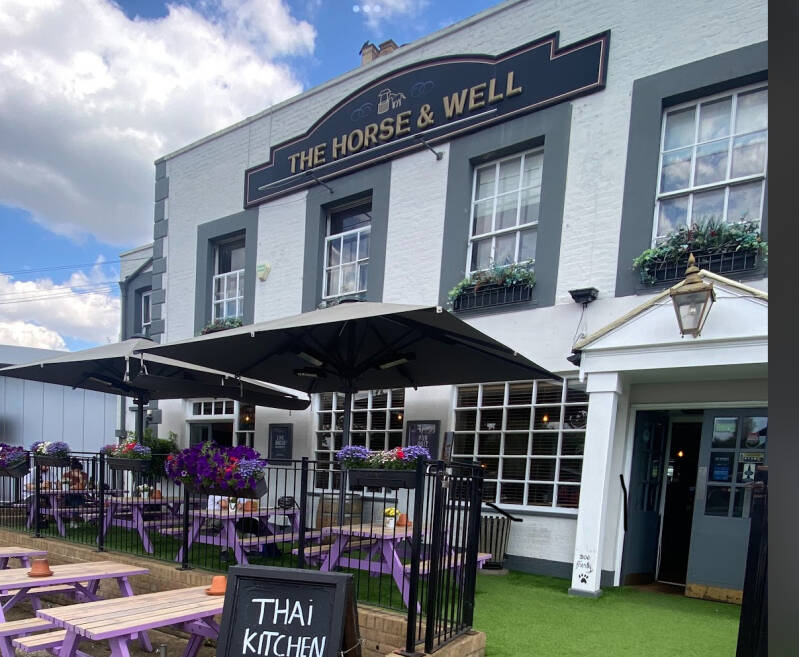
West
SYILVIA PANKHURST
SITE OF THE RED COTTAGE
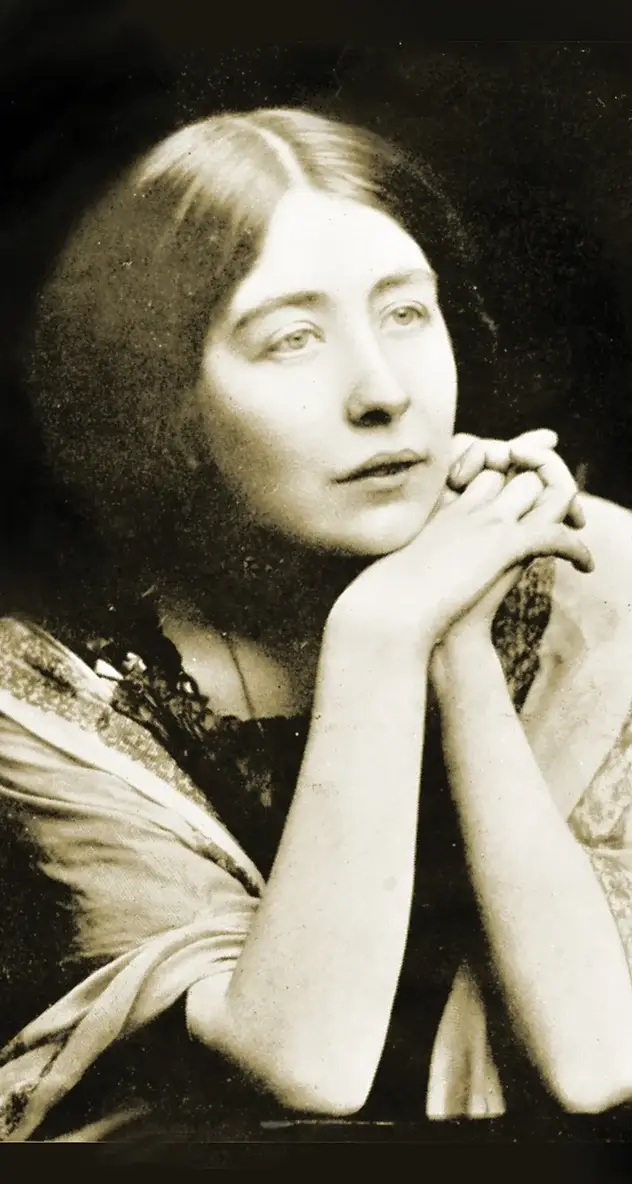

It was GEORGE LANSBURY who introduced SP to the area. Prior to his residence in CHARTERIS ROAD she lived here “in sin”, challenging the moral codes of her day, with an Italian Anarchist, SILVIO CORIO, with whom she had a boy, RICHARD, in 1927.
This place became a centre of radical thought, and the well heeled locals expressed some resentment.
The couple started “THE NEW TIMES AND ETHIOPIA NEWS” while living here.
The RED COTTAGE got its name after the leftist activities they carried away from here.
The couple and kid moved to WEST DENE, CHARTERIS ROAD, a much larger house, in 1933
AN ANTI-WAR STONE BOMB
This memorial was erected in protest for the bombing of the people of ETHIOPIA, under the orders of MUSSOLINI, in 1935. He intended to show off himself as a military leader and Italy’s muscle, invading from the Italian territories of SOMALILAND and ERITREA.
Mussoline unleashed upon ETH the horrors of modern war: the air force AND the artillery delivered bombs and canisters of chemical weapons, such as mustard gas and phosgene, against troops and villagers.
The LEAGUE OF NATIONS declared Italy an aggressor but failed to act against them.
SYILVIA PANKHURST was a committed anti-fascist, fighting for the independence of ETH.
Most of the inscriptions are unlegible:
South Face: “To,those who in 1932 upheld the the right to use bombing aeroplanes l
East Face: “This monument is raised as a protest against war in the air”
The only one readable is the North Face: ”Originally unveiled by R.ZAPHIRO Secretary of the Imperial Ethiopian Legation, London. Supp.by J.RANGER, J.DAVEY, SYLVIA PANKHURST, WEBSTER.Oct. 20 1935}”
West Face: “The site(…)is property of S.P. Design and work ERIC BENFIELD”
by GERARD GREENE, REDBRIDGE MUSEUM & HERITAGE CENTRE MANAGER
The first fascists – and the first anti-fascists – in London 100 years ago
Historian ALFIO BERNABEI tells the remarkable story of how Sylvia Pankhurst and Silvio Corio railed against the fascist ‘camorra’ in Clerkenwell’s Little Italy in the aftermath of Mussolini’s seizure of power.
After the March on Rome that had taken place a few months earlier at the end of October. Mussolini was now in power; the fascist armed militia was at work consolidating its reign of terror.
In London, emboldened members of the branch of the Italian Fascist Party that had been set up in December were already at work with plans to organise the Italian community in Britain numbering about 20,000 into what was described as a “state in miniature.”
BANCROFT’S SCHOOL
In 1737, Francis Bancroft, a wealthy city businessman, left the bulk of his fortune to the Drapers’ Company “to establish and maintain almshouses for twenty former Freemen of the Company ... and a school for one hundred poor boys aged between seven and fifteen”. The boys were to be instructed in “reading, writing and casting accounts”. The Drapers' Company became the Trustees of Bancroft's School, and have since maintained an active and generous connection with the School. The Master and Wardens of the Company still hold an annual visitation of the School, a stipulation of Bancroft's will, although they no longer play the role of the public examiner, as was initially the case.
Bancroft’s School was set up in Mile End, London on what is now the site of Queen Mary University of London.
Bancroft's School is a co-educational private day school in Woodford Green, London. The school has around 1,000 pupils aged between 7 and 18, around 200 of whom are pupils of the Preparatory School and 800 of whom are pupils of the Senior School.
Drapers?
The Worshipful Company of Drapers is one of the 111 livery companies of the City of London. It has the formal name The Master and Wardens and Brethren and Sisters of the Guild or Fraternity of the Blessed Mary the Virgin of the Mystery of Drapers of the City of London. More usually known simply as the Drapers' Company, it is one of the historic Great Twelve Livery Companies and was founded during the Middle Ages.

Why not continuing on to CHINGFORD?

TFL bus route 179




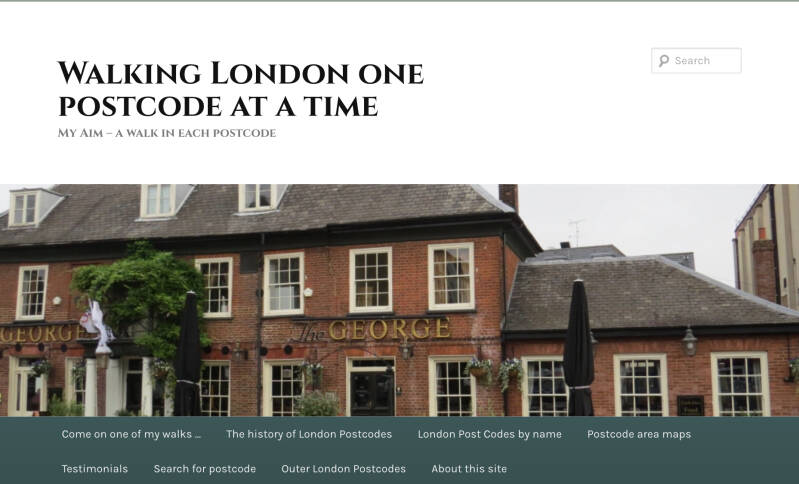




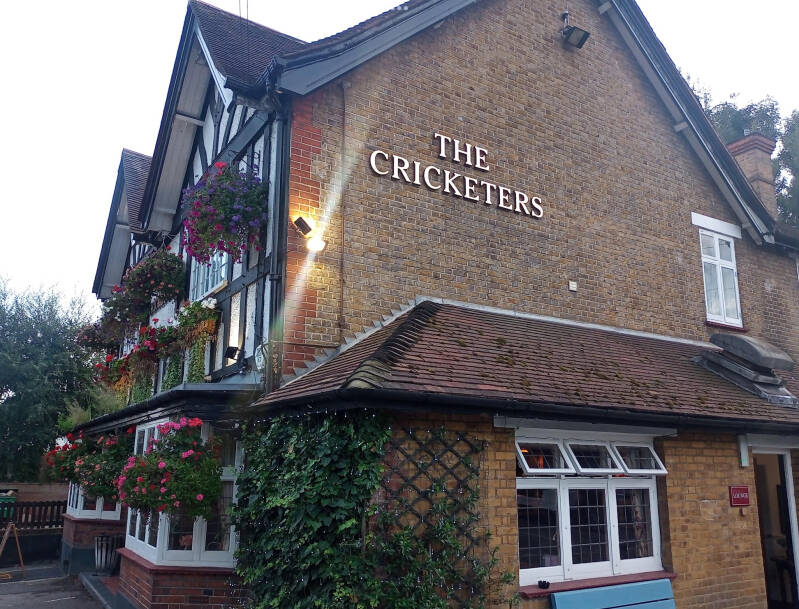



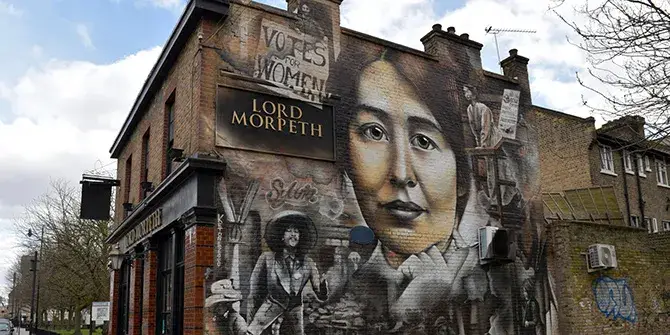




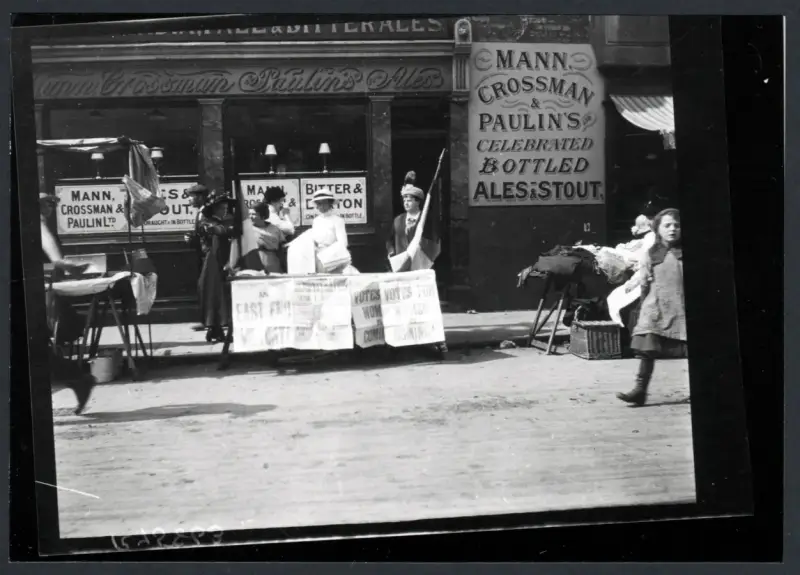



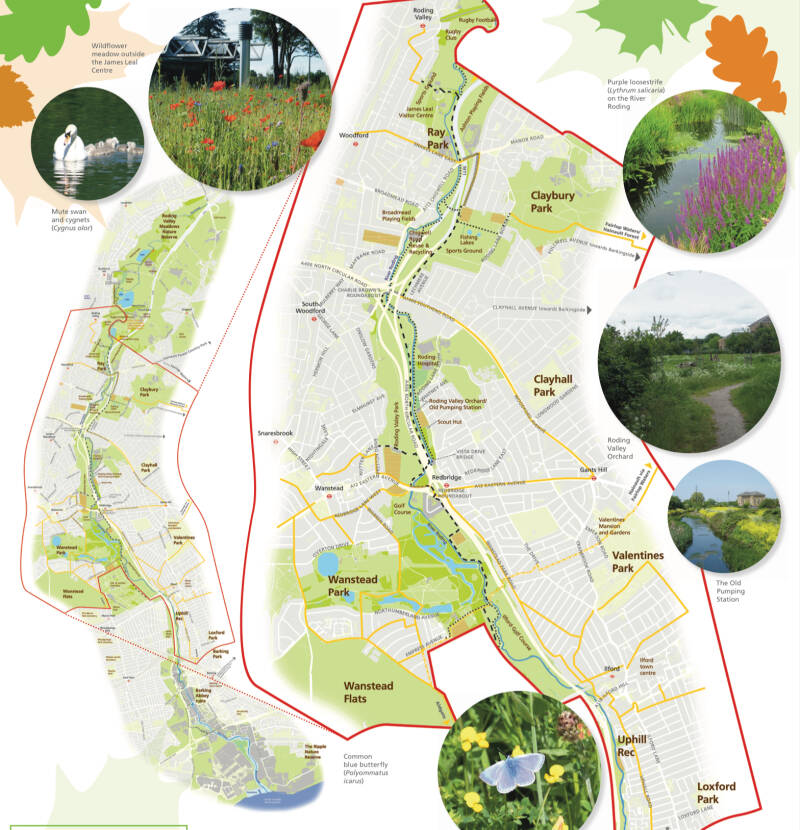









Create Your Own Website With Webador